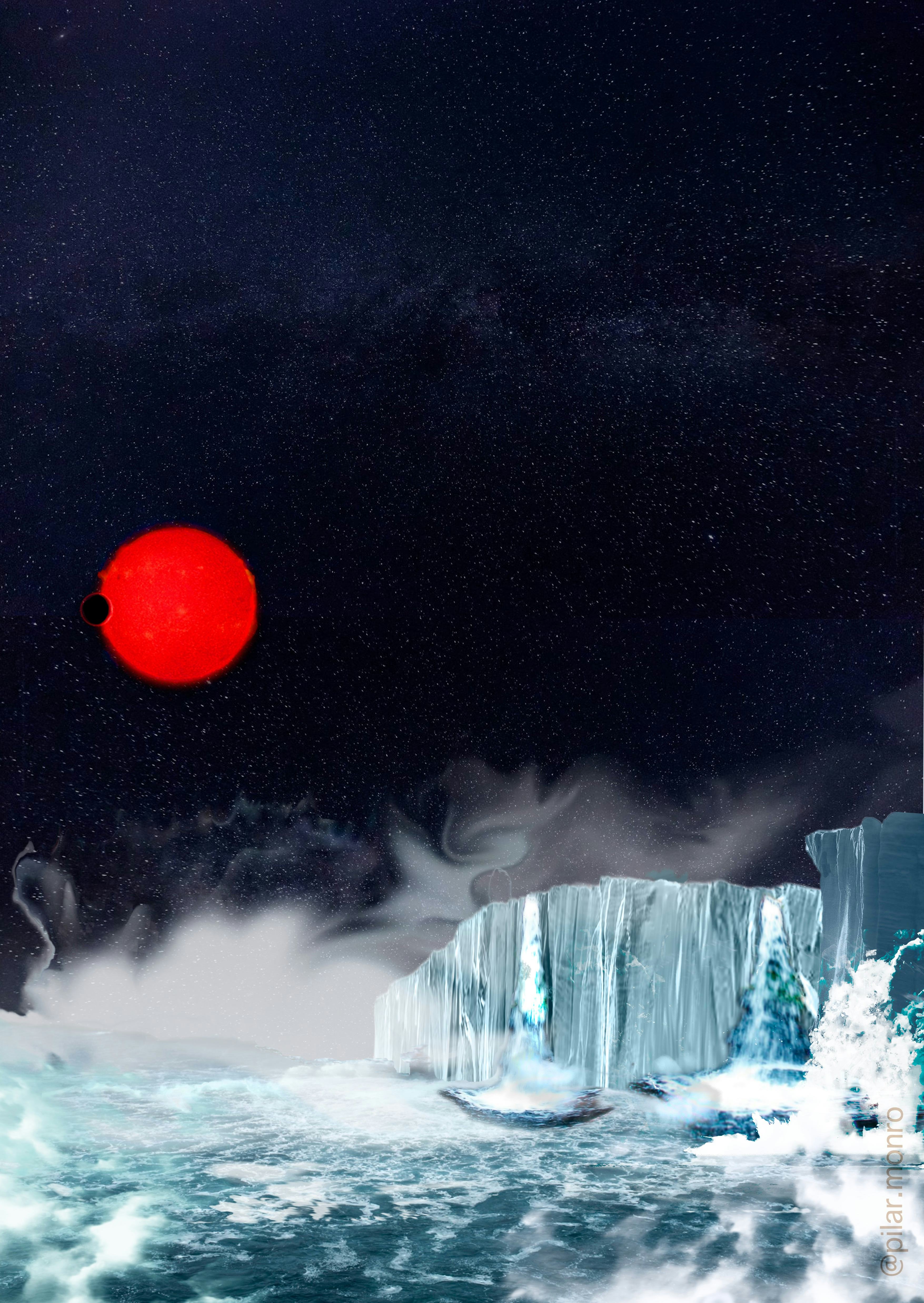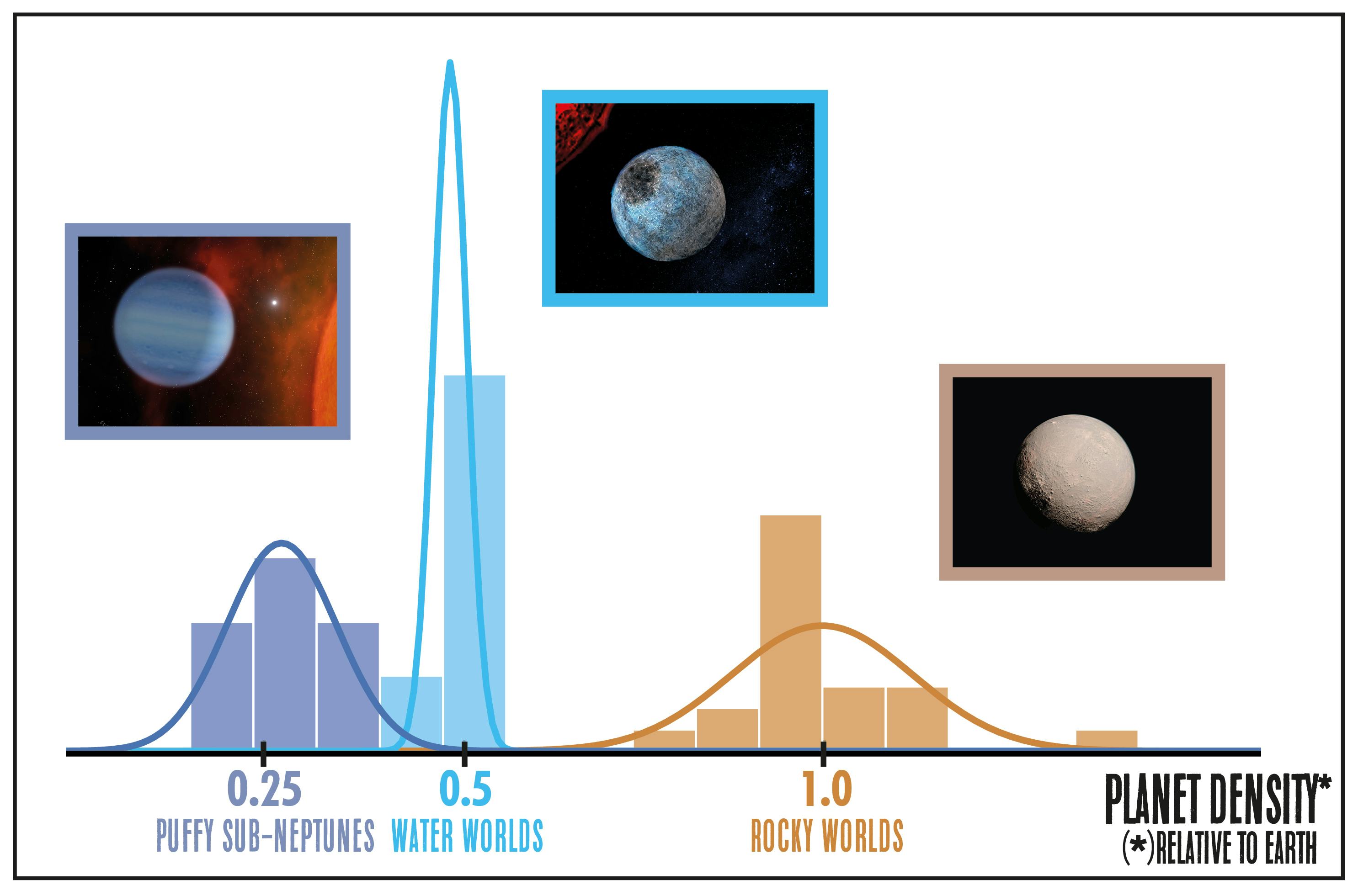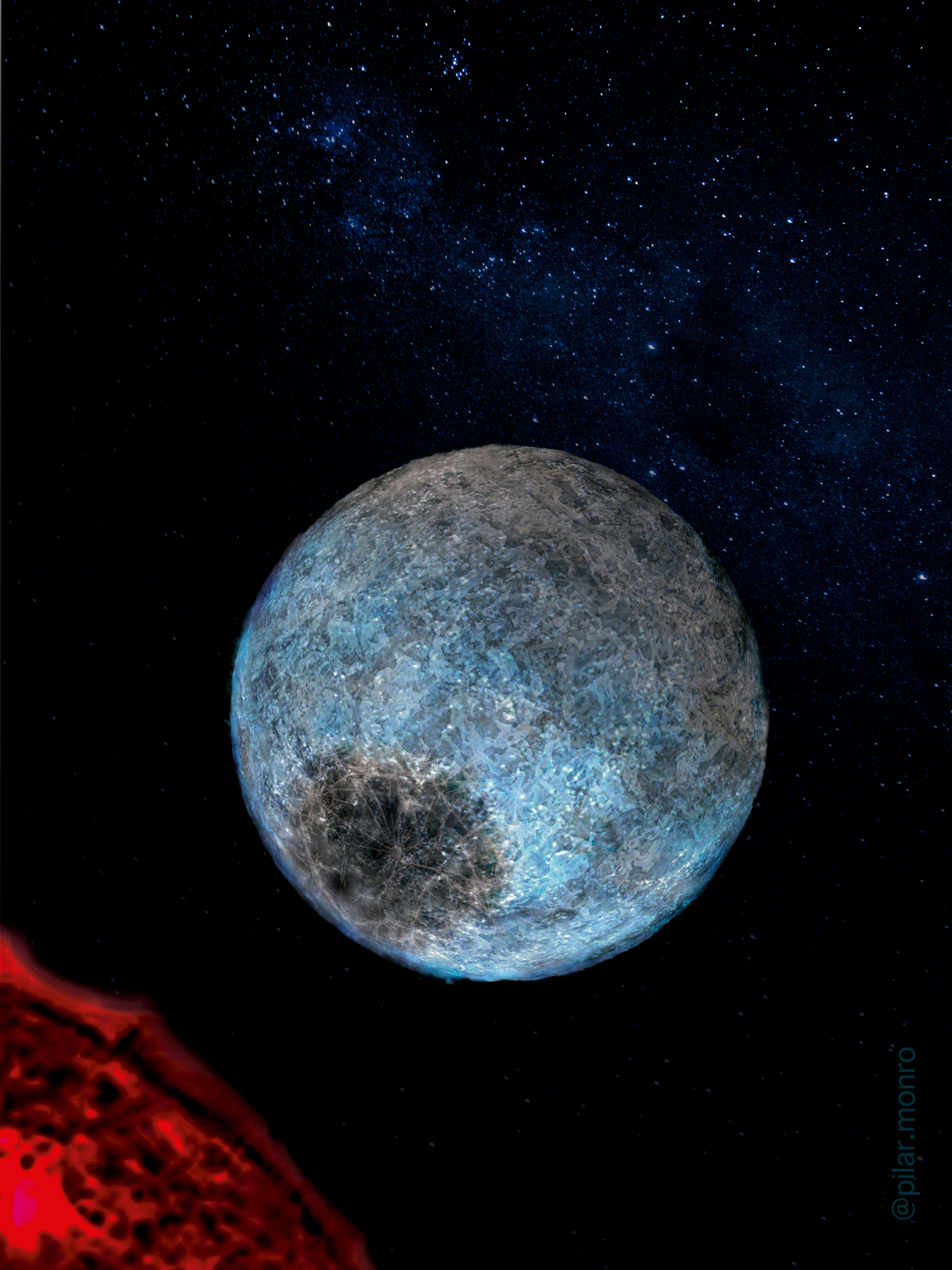
Water worlds could be surprisingly common in our galaxy — but they probably don’t look like you expect.
If we find evidence of life on alien worlds, it will probably be on a planet somewhere between the mass of Earth and Neptune, orbiting closely around a small, cool red dwarf star. Astronomers know of dozens of these planets so far, and according to a recent study, many of them may be water worlds with at least half their mass made up of either liquid water or ice.
What’s new — We don’t (yet) have detailed enough images of any Earth-like exoplanets to say whether they actually have atmospheres, let alone what their surfaces and inner layers look like. But planetary scientists can get clues about what a planet is made of based on how dense it is. Denser planets are more likely to be made of denser materials, like rock or even metals, while lighter planets are more likely to contain mostly gas.
When astronomers Rafael Luque (of the University of Chicago) and Enric Pallé (of the Institute of Astrophysics of the Canary Islands) recently calculated the density of 34 recently-discovered exoplanets, all smaller than Neptune, orbiting red dwarf stars, they noticed that the measurements fell into three categories:
- Rocky worlds — Planets about the same density as Earth. These could still be habitable, if they’re the right distance from their host stars and have decent atmospheres — after all, our planet is the very model of a rocky world, and it has loads of water and is extremely habitable.
- Water worlds — Planets about half as dense as Earth, that match what models expect for a world that’s half rock and half ice or liquid water. In other words, some of these worlds might be very similar to Europa or Ganymede, which have layers of liquid water and ice sitting above their rocky cores. But others are so close to their stars that if they have liquid water, it’s probably in underground reservoirs or pockets, not oceans and lakes on the surface.
- Airy worlds, or puffy sub-Neptunes — Planets larger than the other two groups, but only about half as dense as the water worlds. That suggests that — a little like a dog with a poofy coat — most of their apparent size is really a thick atmosphere of hydrogen and/or helium.
They recently published their results in the journal Science.

Here’s The Background — The water worlds were missing from previous models, which sorted small exoplanets like these based only on their size, not their mass or density. That produced just two categories: dense rocky worlds like Earth or Mars, and lighter puffy worlds, with a distinct gap in between.
Until recently, it has been difficult for astronomers to measure the mass of a distant exoplanet well enough to be useful.
“The two different ways to discover planets each give you different information,” says Pallé in a statement. And the transit method, which favors relatively small planets near their stars, is a great way to measure the radius of a planet, but not its mass. That takes a different kind of measurement.
But thanks to NASA’s Transiting Exoplanet Survey Satellite and follow-up measurements from telescopes here on Earth, the freshly-discovered batch of small planets in Luque and Pallé’s sample had much more precise data to work with. That allowed the researchers to calculate how dense each planet was — the relationship between its size and its mass. Their work revealed the water worlds.
“It is also surprising how common they are,” says Luque.

Digging into the details — Luque and Pallé already have some ideas about why these water worlds are so common and how they form.
They suggest that water worlds — with half their mass made up of either frozen or liquid water — probably form beyond the snow line: out in the distant reaches of star systems, where it’s cold enough for compounds like water, carbon dioxide, or ammonia to freeze into grains of ice, which can get pulled into growing planets.
Assuming that the disks of gas, ice, and dust orbiting most stars are made of the same proportions of each ingredient as our own Solar System, then digital models predict that planets that form beyond the snow line should have a roughly 50/50 ratio of ice to rock — which matches the density of Luque and Pallé water worlds.
And then these planets probably migrated inward to orbits closer to their stars — just like Jupiter probably formed farther out from the Sun than it is now, then migrated inward to somewhere around Mars’ current orbit before drifting back out to its current spot.
“More massive stars are more likely to form very massive planets such as the gas giants in our Solar System, Jupiter and Saturn. The presence of such massive planets at larger distances may block the migration of water world planets to the inner regions of the system,” explains Luque. That may be why our Solar System doesn’t have an ocean world sitting in the habitable zone, for instance. “Since red dwarf stars do not typically form these gas giant planets, there are no obstacles to water worlds forming at large distances and migrating all the way inward, where we can detect them with our telescopes.”

Why It Matters – At the moment, small worlds around red dwarf stars, like the ones in Luque and Pallé’s sample, offer our best chance of searching for signs of habitability, or even life, on a distant planet. For one thing, red dwarfs are the most common stars in our galaxy, which puts the odds firmly in their favor.
And because a close-orbiting planet tends to block more light when it passes in front of its star, it’s easier for observatories like the James Webb Space Telescope to measure the light absorbed and emitted by different chemicals in the atmosphere.
What’s Next — “Like every discovery in science, we have created more questions now than before our study,” says Luque. “I hope that our study opens new avenues and ways to think about habitability prospects for these types of worlds and the conditions that must be met.”
Upcoming observations from Webb could shed some (infrared) light on these exoplanets’ atmospheres, since many of the exoplanets on Webb’s to-do list are small worlds around red dwarfs — including a few of the planets from Luque and Pallé’s study sample. More data could help planetary scientists build models to explore the inner makeup of some of these planets, and perhaps speculate about what their surfaces might be like.
Of course, those upcoming observations will also tell us whether Luque and Pallé are right about their exoplanet categories — and whether the water worlds really are water worlds.
Meanwhile, work in our own backyard may help shed light on what’s going on around distant, dim stars.
“Upcoming exploration of the moons of Jupiter and Saturn may reveal a lot of things that are applicable for these type of worlds,” says Luque. “Exciting times!”







